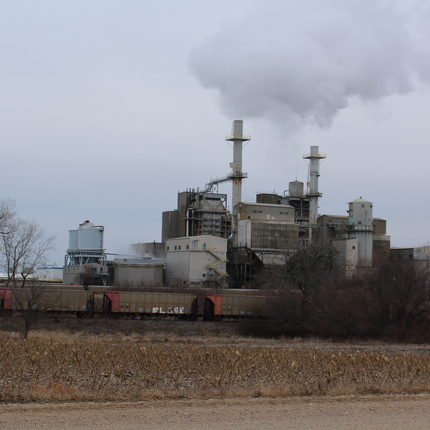By Kayla Bergman, former staff member. Published in the Cedar Rapids Gazette, July 7, 2019
Rural America could power a clean economy — but first we need to solve the coal debt crisis.
As the price of renewable energy declines, new wind and solar projects are being built across the country. These projects create jobs, reduce pollution, and help keep electricity rates stable, facilitating a significant return on investment for communities hosting projects. And, most of the time, new renewable energy projects are built in rural America, tapping into abundant wind and solar resources.
But, in most cases, the power from these renewable projects isn’t used locally in the rural communities that host them. Many rural communities are dependent on the energy resource mix of their rural electric cooperatives (co-ops) — which remain largely reliant on fossil fuels. Nationally, electric co-ops derive two thirds, or 67 percent, of their energy from coal and natural gas.
Some co-ops are taking steps to transition to renewable energy. Farmers Electric Cooperative in Iowa, which generates 20 percent of its energy needs from local solar projects, has emerged as a Midwest leader. In New Mexico, Kit Carson Electric Cooperative aims to use solar power to generate 100 percent of its daytime energy needs by 2022.
Co-op members support this transition because it can produce benefits such as emissions reductions while also lowering costs. In 2017, the price of solar and wind energy became more affordable than natural gas and coal-based energy sources, decreasing by 88 percent and 69 percent, respectively. A 2018 Rocky Mountain Institute report found the transition to renewable energy could save electric cooperatives in some states at least $600 million dollars by 2030.
However, many other co-ops face a major obstacle in switching to clean energy: billions of dollars in debt tied to the operation of uneconomic coal plants. Instead of investing in energy efficiency measures and new renewable energy projects, co-ops are stuck paying billions in debt tied to coal plants, even when replacing them could reduce costs.
To accelerate the transition to renewable energy in rural America, we must solve this suffocating coal debt problem.
Fortunately, there are solutions. In a new report published by three Midwest organizations, “Rural Electrification 2.0: The Transition to a Clean Energy Economy,” options are presented for policymakers and co-op leaders to help address this coal debt problem, such as securitization, credit asset swaps, debt absolution, and regulatory actions. The report was prepared by the Center for Rural Affairs, CURE, and We Own It and can be found at cfra.org/publications/RuralElectrification.
Strikingly, much of this coal debt is actually owed to the federal government, through the U.S. Department of Agriculture’s Rural Utilities Service. These antiquated federal policies once served our nation well. Improving these same policies can play a key role in alleviating the burden coal debt has placed on electric cooperatives and rural America.
In all, addressing coal debt leads to more affordable and clean energy — benefiting residents of all states. The new tax revenue from these projects lead to investments in schools, roads, and other infrastructure, providing an economic anchor for rural areas. And, as presidential candidates vie for rural voters in the 2020 election, proposals for addressing climate change must include solutions for coal debt. Additionally, plans that prioritize renewable energy investment should be a leading step for our future of mitigating climate change. Strong federal policy in these areas can and should empower rural America to lead the nation in transitioning to a clean energy economy.





